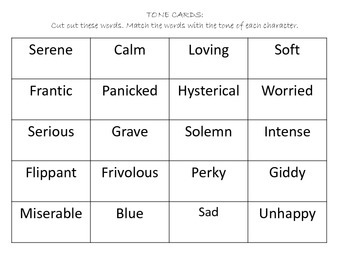
Daisy is clearly nervous once he goes inside and exudes a false “warmth” until she can’t stand it any longer. What about tension? Tom frowns at the call. Eventually, she just throws her napkin down and goes inside. While Tom’s inside, she doesn’t tremble or cry, or show any other signs of fear. Daisy doesn’t shrink back her body fills with energy, as she starts to praise Nick. It should be noted that authors and pieces of writing may try to evoke or contain a specific feeling or emotion, but all readers respond differently to text. Even if you have to guess here, you’ve increased your chances of being successful.ĭo any words here support fear? Tom doesn’t blanch or cringe at the butler’s words he frowns. In literature, mood helps the reader feel what characters are feeling and helps the reader place themselves, mentally and emotionally, into the setting of the story. If you’ve read the passage carefully, you should get a negative vibe out of it, and so now you’ve narrowed your odds of getting this question right from 1 in 5 to 1 in 2. B and E aren’t positive, so each of those would get a minus sign.
Moods for stories plus#
A, C, and D are all words that we associate with positive feelings, so each of those would need a plus sign. Go through the answer choices and mark positive feelings with a plus sign, and negative feelings with a minus sign. The mood of this passage is best described as: Let’s say you ran across a section like this in a passage on a reading comprehension test, dealing with mood.ġ. The adjectives “breathless” and “thrilling” describe Daisy in this passage, but Tom’s “absence quickened something within her.” Clearly, she is trying to cover over different feelings inside. Her voice is “glowing and singing,” but any attempt at warmth is abruptly ended when she throws down her napkin and goes inside after Tom.Īdjectives can be vivid, as well. Tom “frown,” and Daisy immediately speeds up her conversation, grasping at straws to compare Nick (her cousin) to a rose.

If the word “said” had been used instead, the reader wouldn’t immediately know that something secret is going on. This is considered a vivid verb because it adds a sense of intent to the word. Note the word “murmured” in the first sentence. Vivid words are especially effective ways to express mood. Doesn’t he?” She turned to Miss Baker for confirmation: “An absolute rose?” You remind me of a - of a rose, an absolute rose. As if his absence quickened something within her, Daisy leaned forward again, her voice glowing and singing. The butler came back and murmured something close to Tom’s ear, whereupon Tom frowned, pushed back his chair, and without a word went inside. Read through it and make note of any words you see that affect the mood, in your opinion. Scott Fitzgerald’s “The Great Gatsby.” This is a dinner scene where Tom has to go into the house to take a telephone call, while his wife, Daisy, and their guests, Nick and Jordan, stay at the table. Read ( and Settings\Teacher\Desktop\The butler came back and murmured something close to Tom.mht)s from Chapter 1 of F. It is the emotion or feeling that the author is trying to convey. Mood isn’t the way that you feel when you start reading ANOTHER practice passage for a standardized test.


 0 kommentar(er)
0 kommentar(er)
